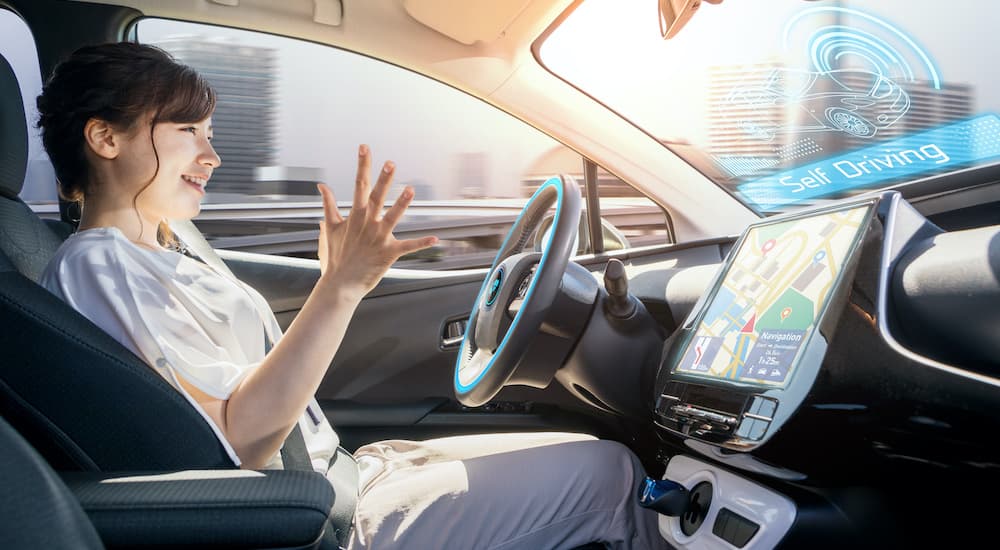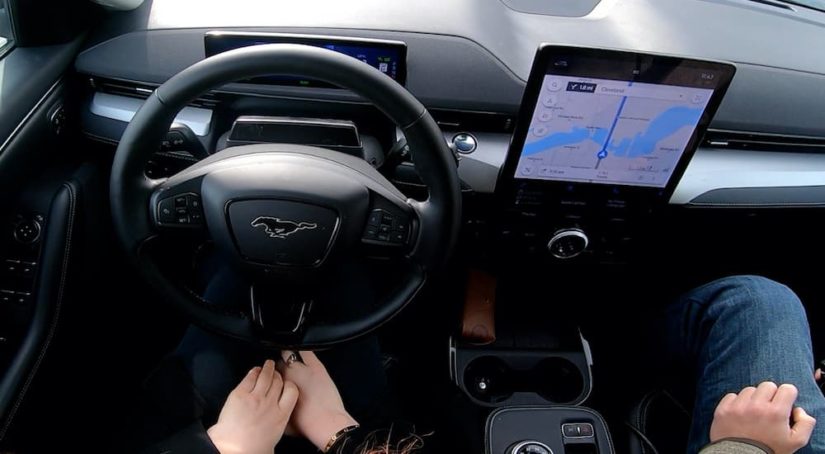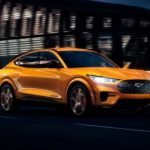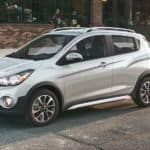We may not have made much progress on the flying cars that science fiction has been predicting, but driverless cars are closer to being a reality than ever before. While no one has yet cracked the code (or, more importantly, established the legality) for a car that will let you take a nap during your commute, there is a large variety of semi-autonomous and even fully autonomous systems on the road today. These range from experimental prototypes to mass market successes, but they each approach the problem slightly differently and offer different capabilities.
Before we get into the details of what is available today, it is worth mentioning the official SAE levels of driving automation. This system consists of 5 levels. Level 0 has no automation, while Level 5 needs no human input. Most cars today are technically Level 1 or Level 2 as they offer systems like lane centering and adaptive cruise control. Level 3 is when a car officially becomes “self-driving,” and there are no such vehicles commercially available today. However, getting to Level 3 is not just a technical challenge but also a legal one. There are Level 3 vehicles on the roads of America today, but only prototypes operated by manufacturers.
It is not the same story overseas, and Honda and Mercedes are actually selling limited numbers of Level 3 vehicles outside of the United States. Unfortunately, the American government has never been particularly quick to legalize new driving technologies (for instance, headlight laws were just updated for the first time in over 50 years), so it might be a while before Level 3 cars officially make it to our shores. But while all of the vehicles with advanced automation that you can purchase are Level 2, that does not mean that they all do the same things.
Waymo Driver
Never heard of Waymo? That’s because this company is not a car manufacturer but rather a subsidiary of Google that specializes in self-driving cars. They are the current leaders in self-driving car technology and have been testing self-driving cars on public roads since 2009. Currently, they are operating a fleet of autonomous taxis (converted Chrysler Pacifica hybrid minivans and Jaguar I-Pace electric SUVs) in Phoenix and San Francisco.
Unfortunately, Waymo’s self-driving technology relies on a bulky and extremely expensive set of lidar and radar sensors. This means that its viability for use in personal vehicles is open to question. Despite operating under a heavy veil of secrecy, Waymo has not been entirely free of scandal – recently, it was reported that dozens of Waymo taxis have been taking over a random dead-end street in San Francisco because of some type of navigation bug.
Tesla Autopilot and Full Self-Driving
Arguably the closest company to developing fully autonomous cars is Tesla. Unlike traditional carmakers, Tesla has never been afraid to challenge the status quo, and they are pushing the technical and legal boundaries with their autonomous systems. Currently, Tesla Autopilot is a Level 2 system that requires you to keep your hands on the wheel at all times. However, it can mostly drive itself, including making automatic lane changes in highway traffic. Smart Summon even allows a Tesla to come and find you in a parking lot.
Tesla is working on transforming Autopilot into a Level 3 system through the use of AI. This would allow you to enter the vehicle, select your destination, and let the car handle the rest. Unlike Waymo, which uses advanced sensors, Tesla is relying on advanced software to interpret camera footage, dramatically lowering the cost. Tesla has also released Full Self-Driving Beta software to individual Tesla owners as part of a Beta program, allowing them to test and “teach” the software on public roads with minimal oversight, although results are somewhat mixed.
GM Super Cruise and Ultra Cruise
When it comes to traditional manufacturers, GM is at the head of the pack. First introduced in 2017 on select Cadillac models, GM’s Super Cruise took a very different approach to autonomous driving that has since been copied by several other manufacturers. While Waymo and Tesla are focused on building the foundation for a true Level 5 system that can operate without a driver in any circumstances, GM took a more conservative approach. Super Cruise relies on a database of detailed lidar maps of select roads, making up for a lack of sensors or AI in the vehicle. While this means that Super Cruise only works on certain divided highways, it also means it can offer true hands-free driving.
However, don’t get too excited. While Super Cruise will let you take your hands off the wheel, it doesn’t let you take your eyes off the road. In fact, GM uses a special driver-facing infrared camera to make sure your attention doesn’t wander. Look away for too long, and Super Cruise disengages. Building in this sort of “forced driver participation” may well be the future of autonomous driving because even if a vehicle is theoretically capable of driving itself, there is no legal precedent for how to handle such technology.
As Super Cruise rolls out across more GM models, including 2022 Chevy and GMC trucks, GM is already working on its replacement. The recently-announced Ultra Cruise is planned to be available in 2023 models and will do away with the geographical limitations of Super Cruise. Unfortunately, there are still limited details on how GM intends to achieve this.
Ford BlueCruise / Lincoln ActiveGlide
Not to be outdone by its major rival, Ford basically copied GM’s Super Cruise system outright. In fact, Ford even faced a lawsuit from GM for its remarkably similar-sounding name. First rolled out on the 2021 F-150 and Mustang Mach-E, BlueCruise functions almost exactly like Super Cruise, including the use of lidar mapping and a driver-facing infrared camera. Of course, since Ford arrived late to the party, the number of BlueCruise enabled roads is currently much smaller than what GM offers for Super Cruise. When offered in Lincoln models, Ford’s technology is known as ActiveGlide.
Jeep Hands-Free Active Drive Assist
Of course, if GM and Ford are doing something, you can expect the remaining member of the Big Three to jump in as well. Jeep and Wagoneer models are now beginning to be offered with the unimaginatively named Hands-Free Active Drive Assist. Although announced for the 2021 Grand Cherokee L, Hands-Free Active Drive Assist has still not rolled out to the public, and the advantages and limitations of the system are unclear. We can assume it will function similarly to Super Cruise and BlueCruise.

Lexus Teammate
Arriving in the United States for the first time on the 2022 Lexus LS 500 is Lexus Teammate, the brand’s autonomous driving technology. This system lies somewhere between the approaches adopted by Waymo and GM, emphasizing safety above all else. Teammate makes use of built-in lidar, radar, and ultrasonic sensors for a superior picture of its surroundings but also incorporates driver monitoring cameras and is programmed to involve the driver in all decisions. For instance, while Teammate supports hands-free driving and autonomous lane changes, Teammate will only perform a lane change if your hands are on the wheel and you check the side mirrors. It remains to be seen whether this design philosophy will be welcomed by drivers.
Lucid DreamDrive Pro
EV startups and autonomous driving systems seem to go hand in hand since Tesla started the trend, so it is no surprise that Lucid has its own version in the form of DreamDrive Pro. As befits the six-figure price tag of the Lucid Air, DreamDrive Pro boasts no fewer than 32 sensors, including cameras, ultrasonics, radars, and lidar. Lucid promises this will allow for hands-free driving, but the technology has yet to be fully implemented since deliveries of its first vehicle have only just begun.
Rivian Driver+
Like Lucid, Rivian also promises “true hands-free driving” for its vehicles through the Driver+ system. However, Rivian does not make use of lidar in its sensor suite, relying on a collection of cameras, radars, and ultrasonics. Driver+ does incorporate a driver-facing camera to ensure your attention remains on the road, but it is unclear if it makes use of lidar mapping like Super Cruise. Given Ford’s large stake in Rivian, it is likely that they have access to BlueCruise technology, and Driver+ may be based on Ford’s system.
Mercedes Drive Pilot
Mercedes Drive Pilot is a full Level 3 system the brand intends to offer on its 2023 EQS and S-Class models. However, while it claims to offer fully autonomous driving with zero need for driver intervention, it does have limitations. Like many of the current autonomous driving systems, Drive Pilot is only intended to operate on divided highways and also only works in good weather. The largest limitation is that even though it claims to be a Level 3 system, Drive Pilot still makes extensive use of driver-monitoring systems and will deactivate if it judges you are paying insufficient attention to the road.
Honda Sensing Elite
There is one Level 3 system available today – if you live in Japan and are interested in leasing a Honda Legend (formerly sold as the Acura RLX here in America). Honda Sensing Elite requires no driver intervention and has no driver monitoring when it is engaged, navigating traffic completely autonomously. This is made possible through the use of no fewer than five lidar arrays and detailed 3D mapping. However, the use of 3D mapping means that the system can only be engaged on compatible highways. Still, Honda Sensing Elite currently represents the closest we have to full autonomous driving.



